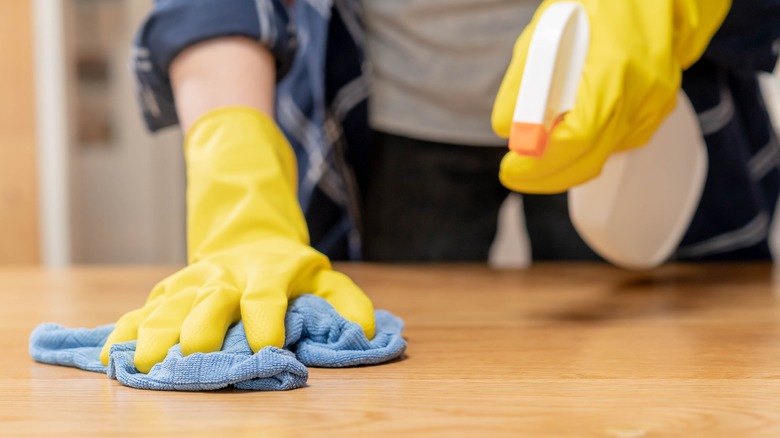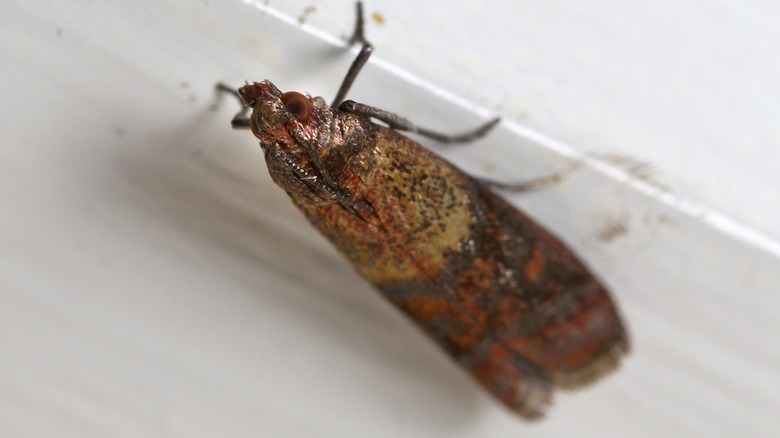The Secret To Keeping Moths Out Of The Kitchen Is So Easy
There's nothing more annoying than sharing kitchen space with pesky moths. However, the good news is the uninvited flying critters are common household insects and not a sign that you need to deep clean your kitchen. In most cases, the moths you see fluttering around your pantry have hitched a ride there in containers of store-bought cereal, grains, nuts, or dry pet food. Fortunately, evicting moths from your kitchen is easy with the help of a little ammonia.
While one moth in your home could be seen as one too many, it is important to identify an infestation to ensure you are appropriately treating all affected areas. In addition, it's also critical to recognize the difference between pantry moths, which reside in dry goods stored in kitchen cabinets, and clothes moths, which live off of fabrics stored in closets and dressers. The former features reddish-brown tinting on the outside of their wings as opposed to the latter's consistent silver and brown hue. Despite the difference in appearance, pantry moths are similar to their fabric-eating cousins in that they make their mark by chewing through items, such as paper and plastic packaging used to store food. This destructive habit, coupled with the fact that adult female pantry moths can lay up to 400 eggs at once, is your cue to begin an ammonia eradication process before the problem escalates.
How to use ammonia to keep moths out of the kitchen
To maximize the effectiveness of the ammonia application, start by inspecting all dry food items in your pantry or kitchen cabinets. In addition to looking for moths, scan all packaging for small holes and webbing. Pantry moth larvae weave fine silky threads that remain even after they have moved on to another food source. It's important to throw away all contaminated food items, including boxes and bags. Next, attach the crevice tool to your vacuum and thoroughly suck up any residual crumbs, webs, or debris left on shelves, making sure to clean all corners. Then, in a bucket or large container, mix together ½-cup of ammonia with one quart of water. As a precaution, before soaking a clean cloth in the ammonia solution, put on a pair of rubber gloves as even minimal contact with your skin or eyes may cause irritation.
Once the cloth is fully saturated, use it to meticulously wash all exposed pantry surfaces as well as any kitchen drawers or cabinets that were in close proximity to the affected areas. As an added safeguard, consider mixing up a fresh batch of the ammonia solution and using it to wipe down the interior and exterior of cabinet and pantry doors in addition to mopping kitchen floors in case any larvae were displaced during the initial shelf scrubbing. Finally, it's critical to keep all drawers and cabinets open until they have dried completely.

